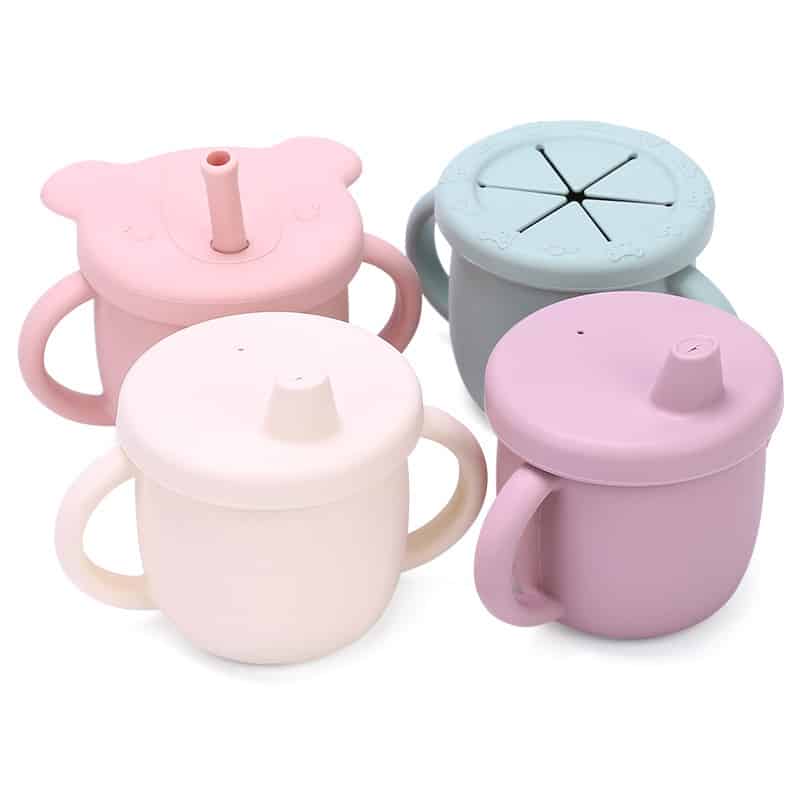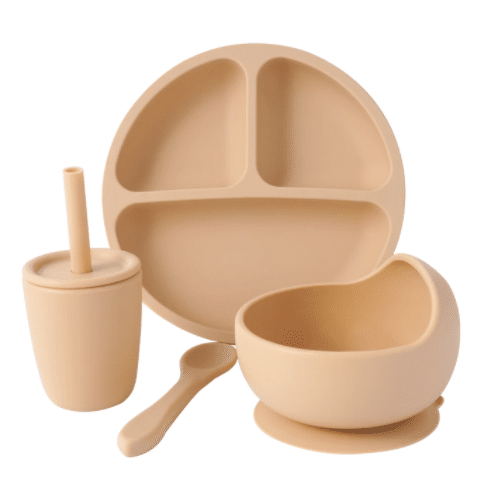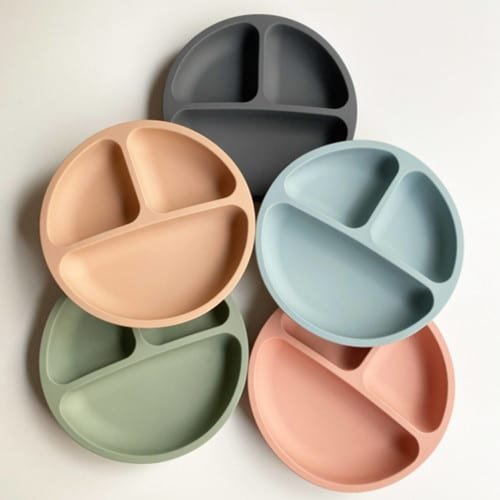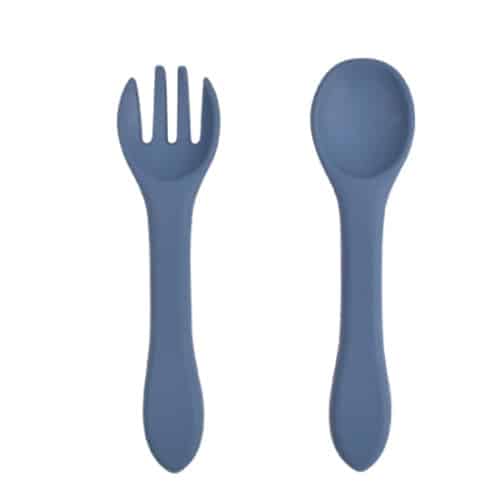Platinum Silicone Rubber: All you Need To Know
What is Platinum Silicone?
Platinum silicone is a type of silicone that uses only platinum (precious metal) as a catalyzer, which increases its quality, apart from silicone’s other properties.
This is the ideal material for manufacturing molds or products that will come into contact with food. The safety and quality of each one of its components also makes platinum silicone the ideal material for baby bottle nipples or surgery materials for hospitals.
Simply put: Platinum silicone is the highest possible grade you can get when it comes to food products. That is why we chose it when making the silicone baby feeding products—we want to make sure your family is getting the best possible quality products. Platinum grade silicone is the only grade that ensures absolutely no toxins are being absorbed into your child’s food, making it ideal as a material to be used for making the silicone baby plate, silicone baby bowl, silicone baby cup, silicone baby spoon, etc.
Medical grade silicones are cured with platinum – which is what we use. The great silicone baby products are free of BPA, BPS, BPF, PVC, lead, cadmium, phthalates, formaldehyde, PAHs and nitrosamines.
There are various grades of silicone, including standard silicone, food grade, and medical grade. Silicone is cured (a.k.a. bound together) through the use of either peroxide or platinum. Curing with peroxide is the most cost effective, but fillers are needed in the process and the final product contains contaminants and byproducts, similar to plastic. Standard and food grade silicones are cured with peroxide. On the other hand, curing with platinum is more expensive, but the resulting silicone is cleaner and purer, and does not contain any fillers or byproducts.
Further Reading:
-
What you need to know about silicone allergy
-
TPU(Thermoplastic Polyurethane)and Silicone
-
The Silicone Toys for Kids and Adult -Pop-it
-
The safety and cleaning methods of silicone baby toys
-
The diversity of silicone toys Stimulating babies’ desire for exploration
-
The difference between silicone and rubber
Cure silicone mold rubber, platinums exhibit the lowest long-term shrinkage and have the longest library life of all mold rubbers (with a price tag to match). While good for making molds for casting a variety of materials, platinums also have application and physical properties that other rubbers do not. As a result, they are used for other applications. For example, some are certified “skin safe” and can be applied directly to human skin. They are also used for making prosthetic and orthotic devices, skin safe appliances and effects, etc. Some are certified “food safe” for culinary applications.
What is Curing?
In accordance with Wikipedia definition, ‘Silicone Curing’ is a fundamental chemical process used in polymer chemistry for cross-linking polymer chains. It is a crucial process of elastomer industry for hardening or solidifying un-cured synthetic or natural rubber material into a desired shape and size. Curing is normally done either by adding chemical additives (curing agent or hardener) or without chemical additives by using heat or UV system.
Silicone Rubber Curing
Since Silicone elastomer is also made out of a polymer chain, it also needs a similar kind of curing before making finished silicone rubber products. Silicone rubber, when not cured or solidified is a sticky, gummy and thick fluid. To harden it, it has to undergo cross linking and cure mechanism (hardening mechanism) which is done by a catalyst reaction i.e. cross link a liquid polymer system where it sets up and solidifies. Silicone is brought to an ideal shape and size mostly by a two-step process. This is done at the point of manufacture and then continued in an after cure process. The operative elements while curing vary synthetically to give the finished result with various properties. This process is irreversible.
For silicone rubber, there are two most commonly used curing systems. Platinum Cure System, and Peroxide Cure System.
Platinum-Cure System
Platinum-cure technology has been accessible for quite a while, especially for applications which need high purity products like medical equipment, food & beverage processing industry, and pharmaceutical application. In platinum cure silicone system two different chemical groups react in the presence of platinum. It is also called as “addition cure” or two-part system. The detailing is more complicated as compared to peroxide compounds. It necessitates that the base silicone polymer contains vinyl functional groups.
Dissimilar to the peroxide cure system, platinum is a genuine catalyst. It is not ingested through the process. Practically, in the platinum cure system, the activity has to be technically decreased as the platinum-catalyzed response happens even at normal temperature and pressure. This first request response happens considerably more rapidly than one started by peroxide, as it doesn’t confide in the rate-deciding step.
Cure silicone mold rubber, platinums exhibit the lowest long-term shrinkage and have the longest library life of all mold rubbers (with a price tag to match). While good for making molds for casting a variety of materials, platinum also have application and physical properties that other rubbers do not. As a result, they are used for other applications. For example, some are certified “skin safe” and can be applied directly to human skin. They are also used for making prosthetic and orthotic devices, skin safe appliances and effects, etc. Some are certified “food safe” for culinary applications.
When high quality, crucial quantities, or recurrent purification is all-important, platinum cure system is the best choice.
In summary
Jution Silicone Rubber is experienced, reliable and customer-centric silicone rubber products manufacturer which makes & offers silicone baby products, platinum cure products, food grade products, and other custom silicone rubber products as per your requirements. They possess the extensive experience to work with platinum cure silicone systems and can guide you in your decision and all through your development to achieve the execution levels you require.





